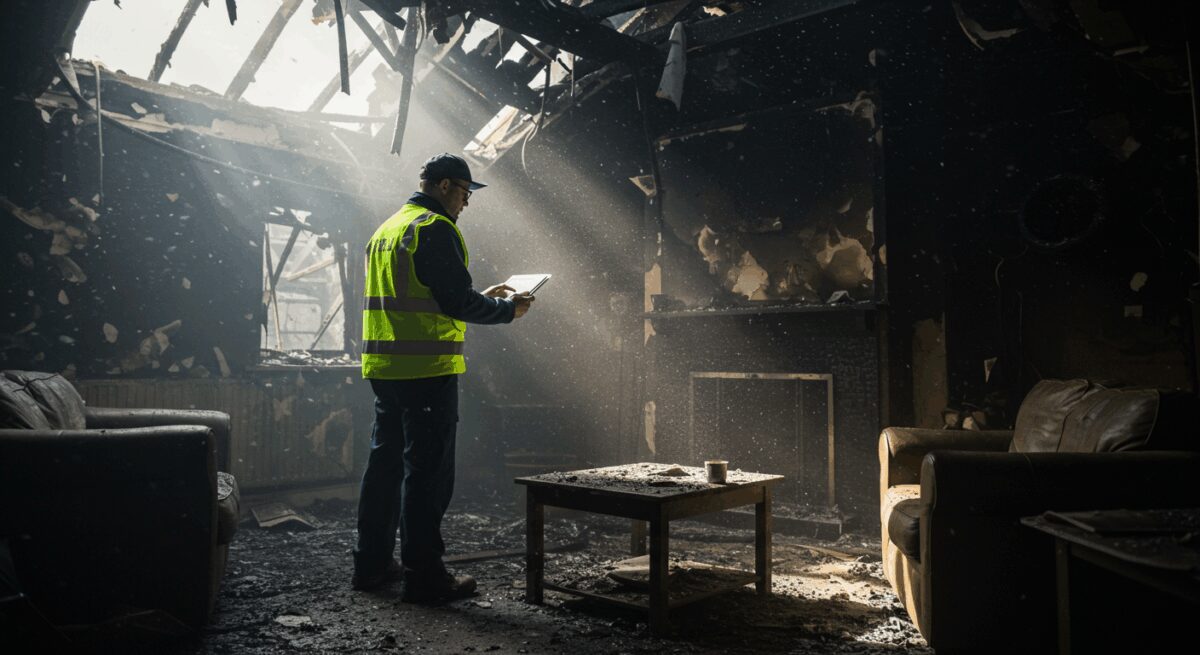House Fire Insurance Claims: What to Claim and How

A house fire can destroy your home, belongings, and sense of security in moments. Knowing what you can claim after a house fire is critical—not just to recover financially, but to rebuild your life. Many homeowners are underinsured or unaware of the full scope of damages covered by a standard policy, leaving them with significant out-of-pocket costs during an already traumatic time. Understanding the claims process can mean the difference between a fair recovery and a financial setback.
What to Include in Your House Fire Insurance Claim
When filing a house fire claim, you need to account for every type of loss. Most standard homeowners insurance policies cover the dwelling itself, personal property, and additional living expenses if you’re temporarily displaced. This includes structural repairs, replacing damaged belongings, and costs like hotel stays and meals. Some policies may also cover detached structures like garages or sheds, landscaping, and debris removal. Specific coverage depends on your policy type and limits, so review your documents carefully or consult with your insurer.
Structural and Dwelling Coverage
Dwelling coverage pays to repair or rebuild the physical structure of your home, including walls, roofing, flooring, and built-in appliances. This extends to permanently installed systems like electrical wiring, plumbing, and HVAC. When assessing structural damage, consider hiring a professional inspector or contractor to identify hidden issues, such as smoke damage within walls or compromised foundations. Document all damage thoroughly with photos and videos before any cleanup begins.
Personal Property Losses
Personal property coverage compensates you for damaged or destroyed belongings, such as furniture, electronics, clothing, and jewelry. Most policies calculate reimbursement based on actual cash value (depreciated value) or replacement cost (current market price to replace the item). To maximize your claim, create a detailed inventory of all lost items, including descriptions, purchase dates, and estimated values. Receipts, photos, or credit card statements can serve as proof of ownership.
Steps to File a Successful House Fire Claim
Filing a house fire claim requires prompt action and meticulous documentation. Begin by contacting your insurance company as soon as possible to report the incident and initiate the claims process. Secure your property to prevent further damage—for example, by boarding up broken windows or arranging for temporary repairs—but avoid discarding damaged items until an adjuster has inspected them. Keep records of all communications with your insurer, including claim numbers, adjuster contact details, and dates of conversations.
Next, compile evidence to support your claim:
- Photograph and video all damaged areas and items from multiple angles.
- Create a room-by-room inventory of lost or damaged possessions.
- Gather receipts, manuals, or appraisals for high-value items.
- Save invoices for temporary repairs, lodging, and other related expenses.
Submit this documentation to your insurance adjuster along with a proof of loss form, which itemizes your claimed damages and their values. Be prepared for the adjuster to inspect your property and potentially request additional information. If you encounter disputes over coverage or settlement amounts, consider seeking a second opinion from an independent appraiser or a public adjuster.
Common Mistakes to Avoid in Fire Damage Claims
Many homeowners inadvertently reduce their settlement by making avoidable errors. One of the most common mistakes is failing to document losses comprehensively—without proof, insurers may deny or undervalue claims. Another misstep is discarding damaged items before the adjuster’s inspection, which eliminates evidence. Additionally, some policyholders accept initial lowball offers without negotiating or reviewing their policy’s full scope. For example, standard policies often cover fire department service charges, which many claimants overlook.
To avoid these pitfalls:
- Do not sign any settlement agreement until you fully understand the terms and are satisfied with the amount.
- Keep detailed records of all expenses related to the fire, including temporary housing and meals.
- Review your policy for coverage limits, exclusions, and deadlines for filing claims.
If your claim involves complex issues, such as disputes over the cause of the fire or extensive smoke damage, professional guidance can be invaluable. In cases where negligence or faulty products contributed to the fire, you may have grounds for additional legal action. For instance, if a defective appliance caused the blaze, our guide on defective product injuries explains how to pursue compensation beyond insurance.
Maximizing Your Fire Insurance Settlement
To ensure you receive a fair settlement, approach the claims process strategically. Start by understanding your policy’s specifics—know your coverage limits, deductibles, and whether you have actual cash value or replacement cost coverage. If you have replacement cost coverage, you’ll need to provide receipts for replaced items to receive the full reimbursement. For high-value items like art or jewelry, consider separate scheduled personal property endorsements, which offer broader coverage.
When negotiating with your insurer, emphasize the true cost of rebuilding, which may exceed pre-fire market values due to inflation or code upgrades. If you face underpayment, present comparable estimates from local contractors to justify your requested amount. In some cases, insurers may try to deny claims based on alleged policy violations, such as unpaid premiums or misrepresented information. If you believe your claim was wrongfully denied, you might explore options for bad faith insurance claims with legal support.
Finally, consider the long-term impacts of the fire. Beyond immediate repairs, you may need to address emotional distress or health issues from smoke inhalation. While standard insurance doesn’t cover non-economic damages, if another party’s negligence caused the fire, you could pursue a personal injury or wrongful death lawsuit for additional compensation.
Rebuilding after a house fire is a challenging journey, but a well-documented and strategically pursued insurance claim can provide the financial foundation for recovery. By understanding what to claim, avoiding common errors, and seeking professional advice when needed, you can navigate this process with confidence and focus on restoring your home and life.


